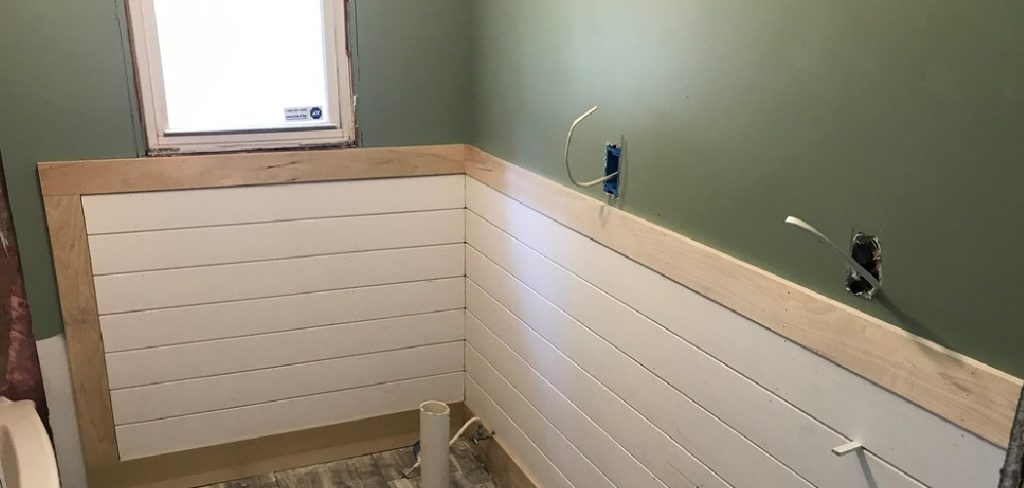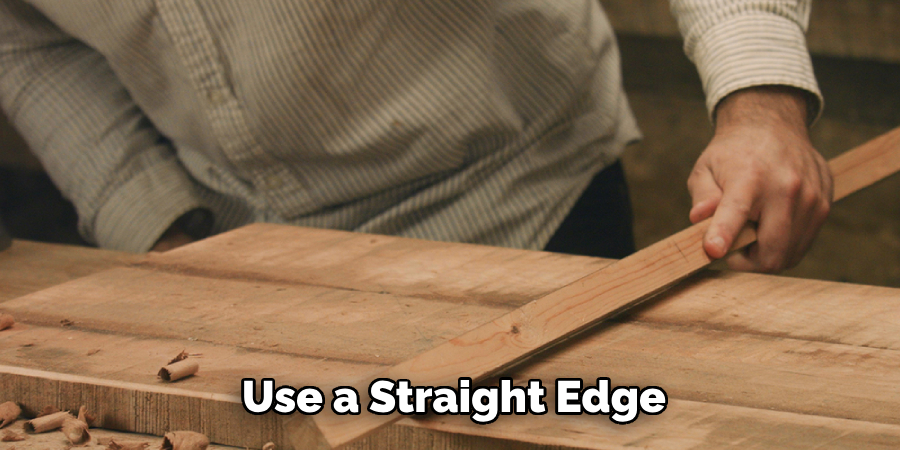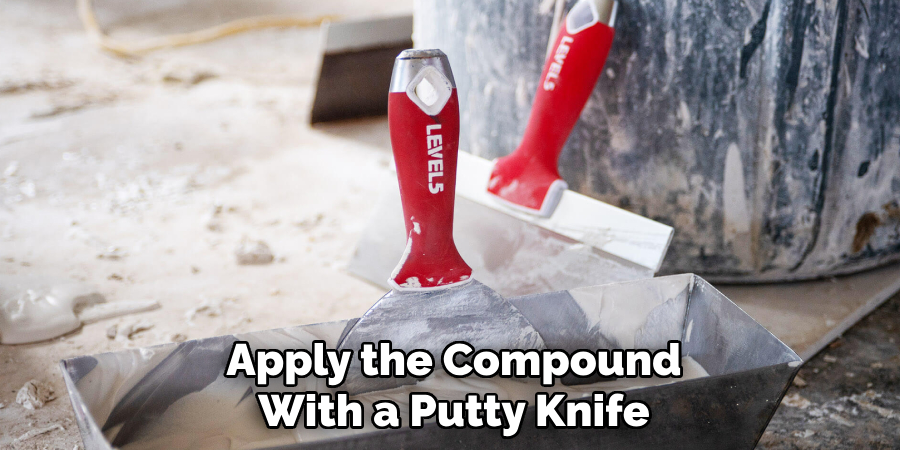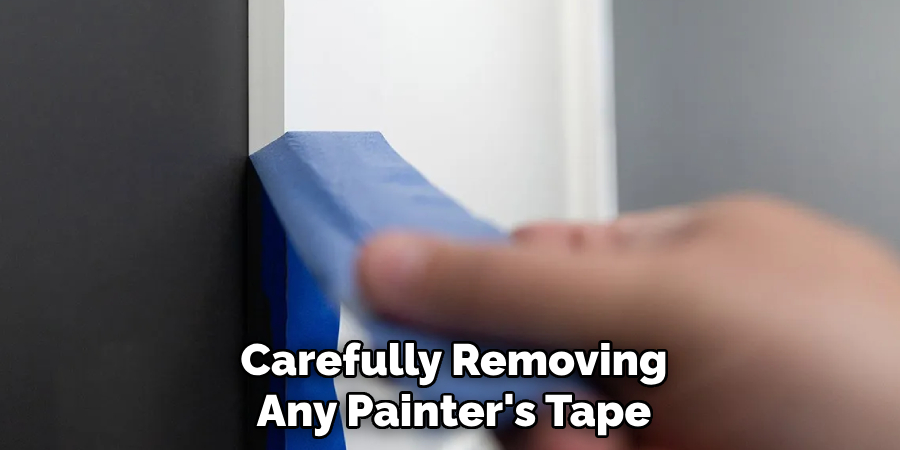Are you looking for ways to add texture and dimension to your bare walls? Beadboard is the perfect solution! This type of paneling is not only aesthetically pleasing, but it also adds durability and can even help with insulation.
How to install beadboard on wall is a fantastic way to enhance the aesthetic appeal of a room, bringing in a touch of classic style and charm. This type of paneling is versatile, suitable for various settings from cozy country kitchens to elegant dining rooms. The installation process is relatively straightforward, making it a feasible DIY project for those with basic carpentry skills. You can transform your walls with the right tools and materials, giving them texture and dimension that paint or wallpaper alone can’t achieve.

Preparing the wall surface and ensuring accurate measurements to fit the beadboard seamlessly is essential prior to installation.
What Will You Need?
- Beadboard panels
- Measuring tape
- Pencil
- Straight edge or level
- Circular saw (if needed)
- Wood glue
- Nails and a nail gun or hammer
- Spackle compound
- Sandpaper
- Primer and paint (optional)
10 Easy Steps on How to Install Beadboard on Wall
Step 1: Preparing the Wall Surface
Before beginning the installation process, it is crucial to ensure the wall surface is clean, smooth, and ready for the beadboard application. Start by removing any existing wallpaper, loose paint, or debris from the wall. This can be done using a scraper or putty knife. Next, wash the wall with mild soap and water to eliminate any remaining dust or oils, and allow it to dry completely. Check the wall for imperfections, such as holes or cracks, and fill these with spackle or joint compound. Once patched, sand the areas smoothly to create an even surface for the beadboard to adhere to.
Also, double-check that no electrical outlets, switches, or other obstacles might interfere with the installation process. Note their locations as you will need to mark and cut these areas precisely on your beadboard panels. Proper preparation ensures that your beadboard installation will be seamless and long-lasting, providing a flawless backdrop to showcase your interior design.
Step 2: Measuring and Cutting the Beadboard Panels
Accurate measurements are vital for a professional-looking installation. Begin by measuring the wall height from the floor to the desired level for the top of the beadboard. Take multiple measurements across the wall to account for any uneven spots. Transfer these measurements to the beadboard panels, marking where cuts are needed. Use a straight edge or level to draw accurate cutting lines on the marked areas. If your beadboard panels are taller than the desired height, carefully cut them using a circular saw.

Be sure to follow all safety precautions when using power tools. It’s a good idea to dry-fit the panels by placing them temporarily against the wall to ensure they fit correctly and to make any necessary adjustments before proceeding to the next step. This meticulous approach at the cutting stage will facilitate a smoother installation and a seamless visual finish.
Step 3: Applying Adhesive to the Wall
With your beadboard panels measured and cut to size, the next step is to apply adhesive to the wall to secure the panels. Begin by using a high-quality wood glue tailored for paneling applications. Apply the adhesive in a zigzag pattern on the back of each panel or directly onto the wall area where the panel will be placed. Ensure the coverage is thorough, particularly around the edges,, to prevent lifting or curling over time. Make sure you align the panels with your markings or dry-fit locations to ensure a precise fit.
Work methodically, applying adhesive to one section at a time and firmly positioning the beadboard panels. This careful application of adhesive will anchor your beadboard, providing sturdy support and contributing to the overall stability and an attractive finish of your wall transformation project.
Step 4: Nailing the Beadboard Panels in Place
Once the adhesive has been applied and the beadboard panels are correctly aligned on the wall, it is time to secure them with nails. Use a nail gun or a hammer and nails, positioning the nails along the grooves or tongues of the beadboard to minimize visibility. Begin by nailing the top and bottom edges, ensuring each panel is firmly attached to the wall. Space the nails approximately 12 inches apart along the entire panel length.
This additional fastening method provides extra security, especially in high-traffic areas or locations where minor shifting could occur. Pay special attention to ensure the panels remain straight and aligned as you progress across the wall. Double-check each panel for sturdiness before moving on to the next section.
Step 5: Filling Gaps and Sanding
After nailing the beadboard panels, it’s essential to address any gaps between the panels or around the edges. Use a spackle or a wood filler to fill any noticeable grooves or nail holes. Apply the compound with a putty knife and smooth it out to ensure a consistent surface. Once the spackle or filler has dried completely, sand the areas gently with fine-grit sandpaper to make them smooth and even with the rest of the panel. This step helps achieve a professional finish by eliminating any visible inconsistencies.

Clean off any dust from sanding before moving on to the next step to ensure a clean surface for painting or priming. By thoroughly filling and sanding, the beadboard wall will offer a seamless appearance that enhances the room’s overall aesthetics.
Step 6: Priming and Painting the Beadboard
With the beadboard panels securely in place and smoothed, the next step is priming and painting to achieve the desired finish. If the beadboard panels come pre-primed, you can skip the priming process; otherwise, apply a coat of primer to the panels to ensure better paint adhesion and an even color. Use a paintbrush or roller to apply the primer, making sure to cover the entire surface, including the grooves, to prevent any bare spots. Allow the primer to dry completely before moving on to painting.
Once the primer is dry, select a paint color that complements your room’s decor. Using high-quality interior paint, apply the first coat evenly, taking care to follow the wood grain for a smooth finish.
Step 7: Applying a Second Coat of Paint
After the first coat of paint has dried completely, it is advisable to apply a second coat to ensure a rich and uniform color. This will enhance the depth of the finish and provide better durability. Begin lightly sanding the painted surface with fine-grit sandpaper to remove any brush strokes or imperfections left from the first coat. Wipe away dust with a clean, damp cloth before starting the second coat. Use a paintbrush or roller to apply the paint evenly, following the wood grain to maintain a smooth appearance. Pay special attention to any grooves or intricate details to ensure thorough coverage. Allow the final coat to dry completely to reveal the full vibrancy of the paint color.
Step 8: Cleaning Up and Final Touches
With the painting process complete, it’s time to focus on the final touches and clean-up. Begin by carefully removing any painter’s tape if used, ensuring not to peel off any paint. Inspect the entire wall to check for any paint drips or uneven sections, and make touch-ups as necessary using a small brush. Look at the edges and corners to ensure they are well-aligned and clean. Once satisfied with the finish, thoroughly clean your brushes, rollers, and other tools used during installation and painting.

Proper cleaning will preserve your tools for future use. Finally, step back to admire your work and ensure the beadboard complements the room as intended, adding depth and character to the space. Your room transformation is now complete, showcasing a seamless and stylish beadboard addition.
Step 9: Decorate and Enjoy Your Space
With your beadboard wall complete and all tools put away, it’s time to decorate and enjoy your newly transformed space. Consider adding decor elements that complement the beadboard’s texture and color, such as framed artwork, mirrors, or floating shelves for added functionality and style. Choose furniture and accessories that enhance the overall aesthetic, creating a cohesive and inviting atmosphere. Remember to balance the visual elements in the room to highlight the beadboard feature without overwhelming the space. By harmonizing your decor with the beadboard’s elegant simplicity, you will create a personalized area that reflects your taste and offers warmth and comfort.
Step 10: Maintenance and Longevity
Regular maintenance is essential to ensure your beadboard wall maintains its beauty and integrity. Dust the paneling routinely with a soft cloth or duster to keep it clean and prevent the accumulation of grime. For more thorough cleaning, use a damp cloth with mild soap to gently wipe down the surface, avoiding excessive moisture that might damage the wood. Inspect the panels periodically for any signs of wear or damage, such as loose nails or chipped paint, and address these issues promptly to prevent further deterioration.

By following these steps and incorporating your style, you can easily install and paint beadboard panels to elevate any room’s look and feel.
Conclusion
How to install beadboard on wall is a rewarding DIY project that can dramatically enhance the aesthetic appeal of any room. It involves a series of meticulous steps from measuring and cutting to painting and finishing, all of which contribute to achieving a seamless, professional look.
You can transform an ordinary wall into a standout feature by carefully following the outlined steps—preparing your space and materials, accurately placing and securing the panels, and ensuring a polished finish with priming and painting. The key to success lies in attention to detail and allowing adequate time for each stage, especially during painting and touch-ups. Regular maintenance will ensure the beadboard remains pristine, retaining its beauty and charm.
With patience and care, beadboard paneling can become a timeless addition to your home, combining classic style with functional design.
